Target Information
| Target General Information | Top | |||||
|---|---|---|---|---|---|---|
| Target ID |
T63803
(Former ID: TTDR01251)
|
|||||
| Target Name |
Vascular endothelial growth factor D (VEGFD)
|
|||||
| Synonyms |
c-Fos-induced growth factor; VEGFD; VEGF-D; FIGF
Click to Show/Hide
|
|||||
| Gene Name |
VEGFD
|
|||||
| Target Type |
Clinical trial target
|
[1] | ||||
| Disease | [+] 1 Target-related Diseases | + | ||||
| 1 | Retinopathy [ICD-11: 9B71] | |||||
| Function |
Growth factor active in angiogenesis, lymphangiogenesis and endothelial cell growth, stimulating their proliferation and migration and also has effects on the permeability of blood vessels. May function in the formationof the venous and lymphatic vascular systems during embryogenesis, and also in the maintenance of differentiated lymphatic endothelium in adults. Binds and activates VEGFR-2 (KDR/FLK1) and VEGFR-3 (FLT4) receptors.
Click to Show/Hide
|
|||||
| BioChemical Class |
Growth factor
|
|||||
| UniProt ID | ||||||
| Sequence |
MYREWVVVNVFMMLYVQLVQGSSNEHGPVKRSSQSTLERSEQQIRAASSLEELLRITHSE
DWKLWRCRLRLKSFTSMDSRSASHRSTRFAATFYDIETLKVIDEEWQRTQCSPRETCVEV ASELGKSTNTFFKPPCVNVFRCGGCCNEESLICMNTSTSYISKQLFEISVPLTSVPELVP VKVANHTGCKCLPTAPRHPYSIIRRSIQIPEEDRCSHSKKLCPIDMLWDSNKCKCVLQEE NPLAGTEDHSHLQEPALCGPHMMFDEDRCECVCKTPCPKDLIQHPKNCSCFECKESLETC CQKHKLFHPDTCSCEDRCPFHTRPCASGKTACAKHCRFPKEKRAAQGPHSRKNP Click to Show/Hide
|
|||||
| 3D Structure | Click to Show 3D Structure of This Target | AlphaFold | ||||
| Drugs and Modes of Action | Top | |||||
|---|---|---|---|---|---|---|
| Clinical Trial Drug(s) | [+] 1 Clinical Trial Drugs | + | ||||
| 1 | OPT-302 | Drug Info | Phase 2 | Diabetic macular edema | [2] | |
| Discontinued Drug(s) | [+] 2 Discontinued Drugs | + | ||||
| 1 | EG-011 | Drug Info | Discontinued in Phase 1/2 | Angina pectoris | [3] | |
| 2 | EG-016 | Drug Info | Discontinued in Phase 1/2 | Peripheral vascular disease | [4] | |
| Mode of Action | [+] 2 Modes of Action | + | ||||
| Inhibitor | [+] 1 Inhibitor drugs | + | ||||
| 1 | OPT-302 | Drug Info | [5] | |||
| Modulator | [+] 2 Modulator drugs | + | ||||
| 1 | EG-011 | Drug Info | [1] | |||
| 2 | EG-016 | Drug Info | [1] | |||
| Cell-based Target Expression Variations | Top | |||||
|---|---|---|---|---|---|---|
| Cell-based Target Expression Variations | ||||||
| Drug Binding Sites of Target | Top | |||||
|---|---|---|---|---|---|---|
| Ligand Name: Alpha-D-Mannose | Ligand Info | |||||
| Structure Description | Crystal structure of vascular endothelial growth factor D | PDB:2XV7 | ||||
| Method | X-ray diffraction | Resolution | 2.90 Å | Mutation | Yes | [6] |
| PDB Sequence |
PTFYDIETLK
100 VIDEEWQRTQ110 CSPRETAVEV120 ASELGKSTNT130 FFKPPCVNVF140 RCGGCCNEES 150 LICMNTSTSY160 ISKQLFEISV170 PLTSVPELVP180 VKVANHTGCK190 CLPT |
|||||
|
|
||||||
| Click to View More Binding Site Information of This Target with Different Ligands | ||||||
| Different Human System Profiles of Target | Top |
|---|---|
|
Human Similarity Proteins
of target is determined by comparing the sequence similarity of all human proteins with the target based on BLAST. The similarity proteins for a target are defined as the proteins with E-value < 0.005 and outside the protein families of the target.
A target that has fewer human similarity proteins outside its family is commonly regarded to possess a greater capacity to avoid undesired interactions and thus increase the possibility of finding successful drugs
(Brief Bioinform, 21: 649-662, 2020).
Human Tissue Distribution
of target is determined from a proteomics study that quantified more than 12,000 genes across 32 normal human tissues. Tissue Specificity (TS) score was used to define the enrichment of target across tissues.
The distribution of targets among different tissues or organs need to be taken into consideration when assessing the target druggability, as it is generally accepted that the wider the target distribution, the greater the concern over potential adverse effects
(Nat Rev Drug Discov, 20: 64-81, 2021).
Human Pathway Affiliation
of target is determined by the life-essential pathways provided on KEGG database. The target-affiliated pathways were defined based on the following two criteria (a) the pathways of the studied target should be life-essential for both healthy individuals and patients, and (b) the studied target should occupy an upstream position in the pathways and therefore had the ability to regulate biological function.
Targets involved in a fewer pathways have greater likelihood to be successfully developed, while those associated with more human pathways increase the chance of undesirable interferences with other human processes
(Pharmacol Rev, 58: 259-279, 2006).
Biological Network Descriptors
of target is determined based on a human protein-protein interactions (PPI) network consisting of 9,309 proteins and 52,713 PPIs, which were with a high confidence score of ≥ 0.95 collected from STRING database.
The network properties of targets based on protein-protein interactions (PPIs) have been widely adopted for the assessment of target’s druggability. Proteins with high node degree tend to have a high impact on network function through multiple interactions, while proteins with high betweenness centrality are regarded to be central for communication in interaction networks and regulate the flow of signaling information
(Front Pharmacol, 9, 1245, 2018;
Curr Opin Struct Biol. 44:134-142, 2017).
Human Similarity Proteins
Human Tissue Distribution
Human Pathway Affiliation
Biological Network Descriptors
|
|
|
There is no similarity protein (E value < 0.005) for this target
|
|
Note:
If a protein has TS (tissue specficity) scores at least in one tissue >= 2.5, this protein is called tissue-enriched (including tissue-enriched-but-not-specific and tissue-specific). In the plots, the vertical lines are at thresholds 2.5 and 4.
|
| KEGG Pathway | Pathway ID | Affiliated Target | Pathway Map |
|---|---|---|---|
| MAPK signaling pathway | hsa04010 | Affiliated Target |
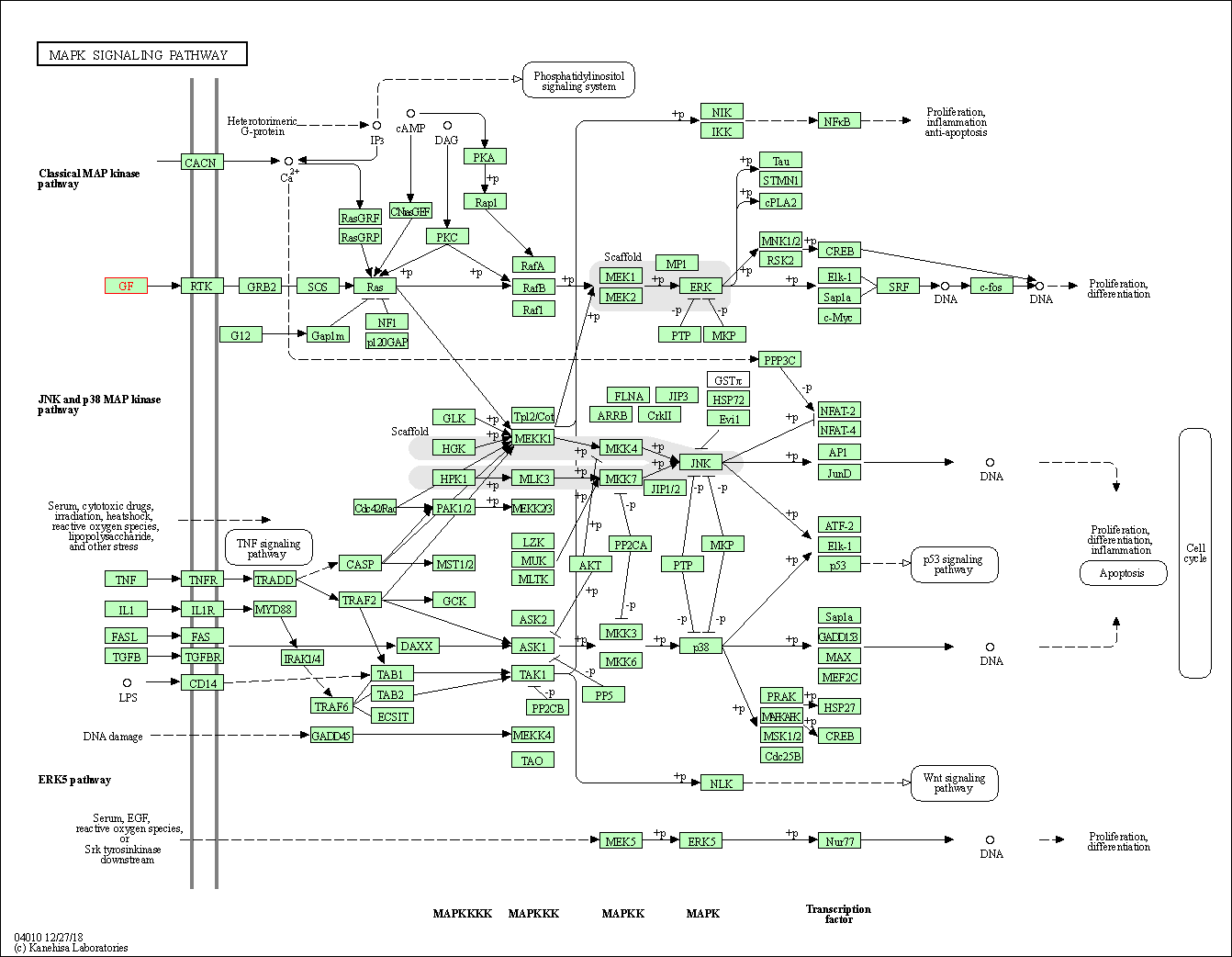
|
| Class: Environmental Information Processing => Signal transduction | Pathway Hierarchy | ||
| Ras signaling pathway | hsa04014 | Affiliated Target |
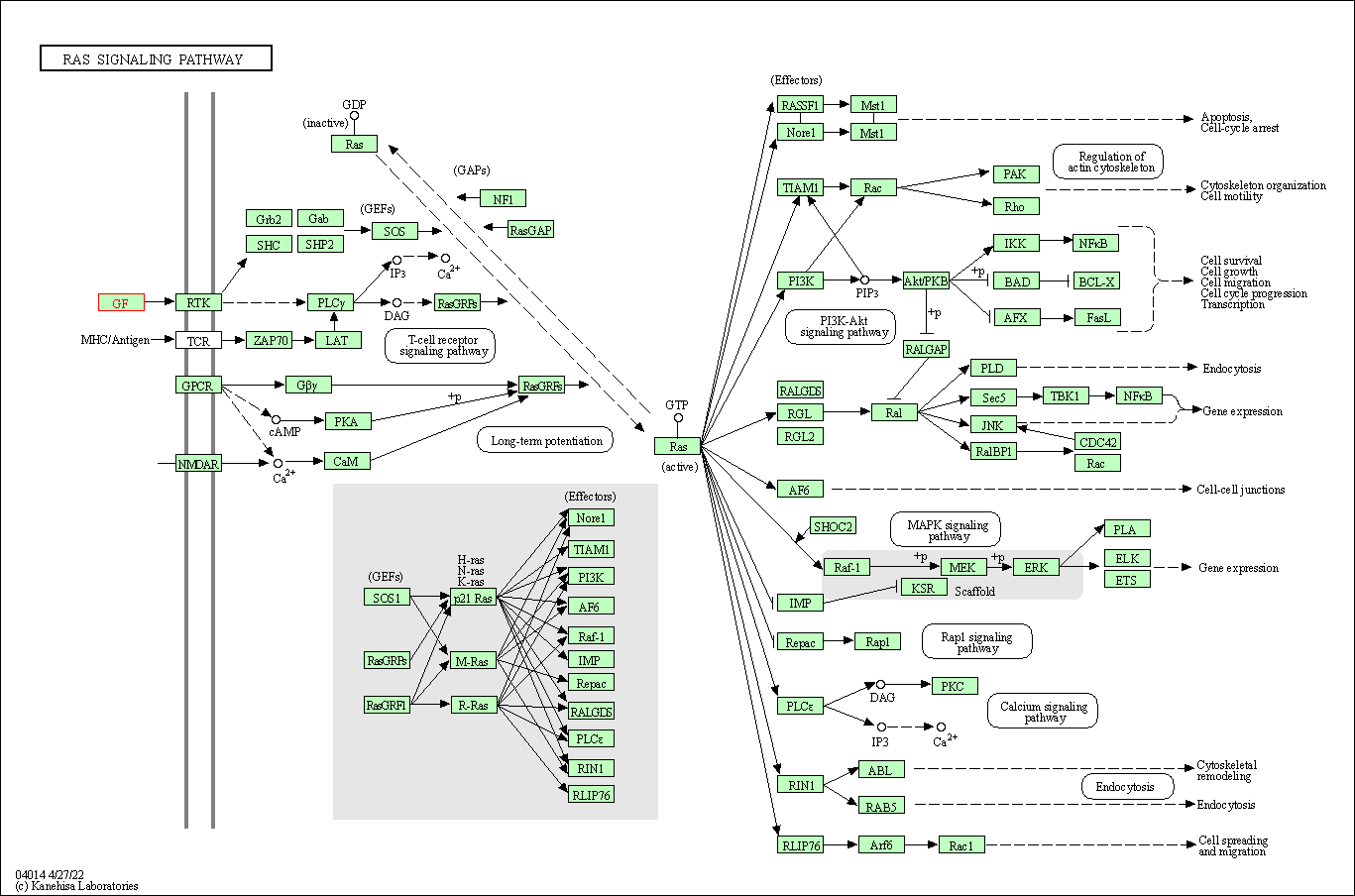
|
| Class: Environmental Information Processing => Signal transduction | Pathway Hierarchy | ||
| Rap1 signaling pathway | hsa04015 | Affiliated Target |
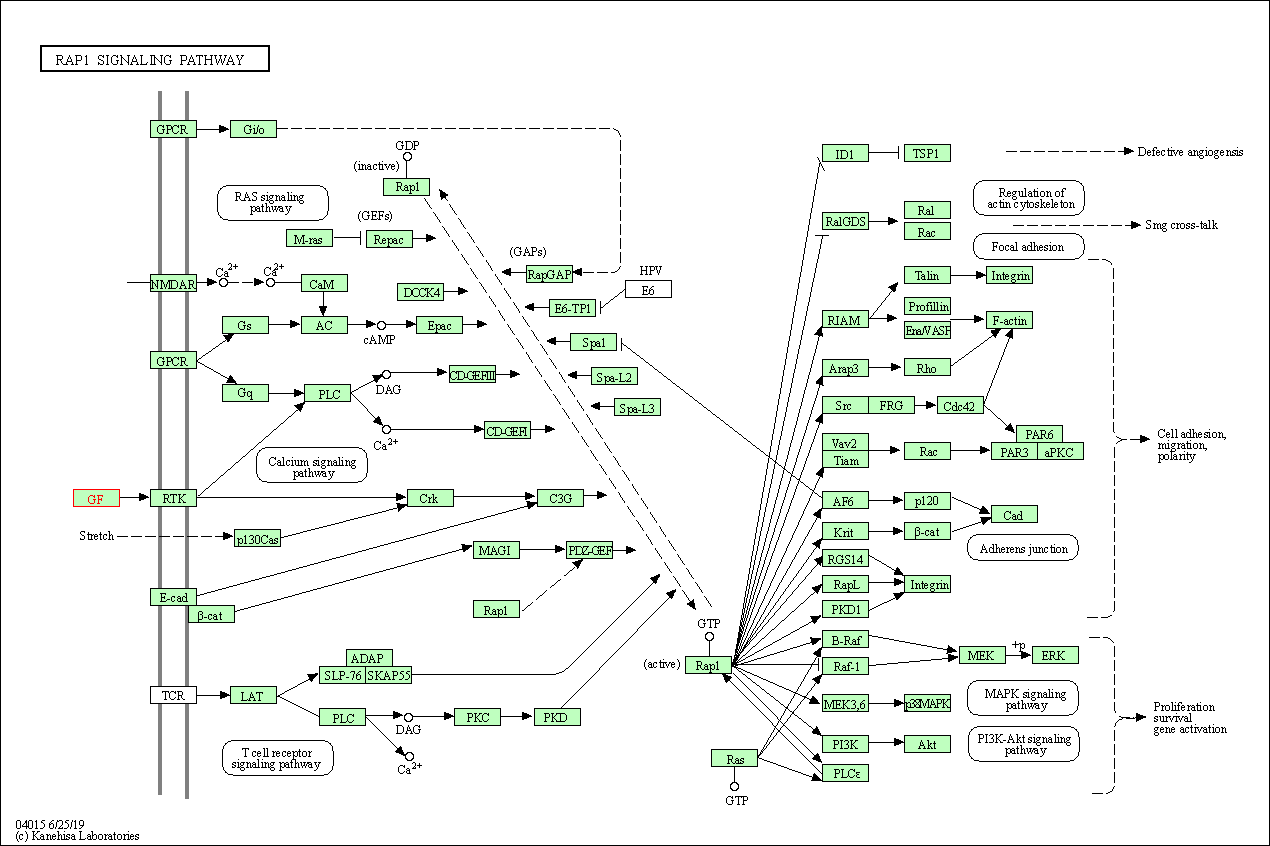
|
| Class: Environmental Information Processing => Signal transduction | Pathway Hierarchy | ||
| Calcium signaling pathway | hsa04020 | Affiliated Target |
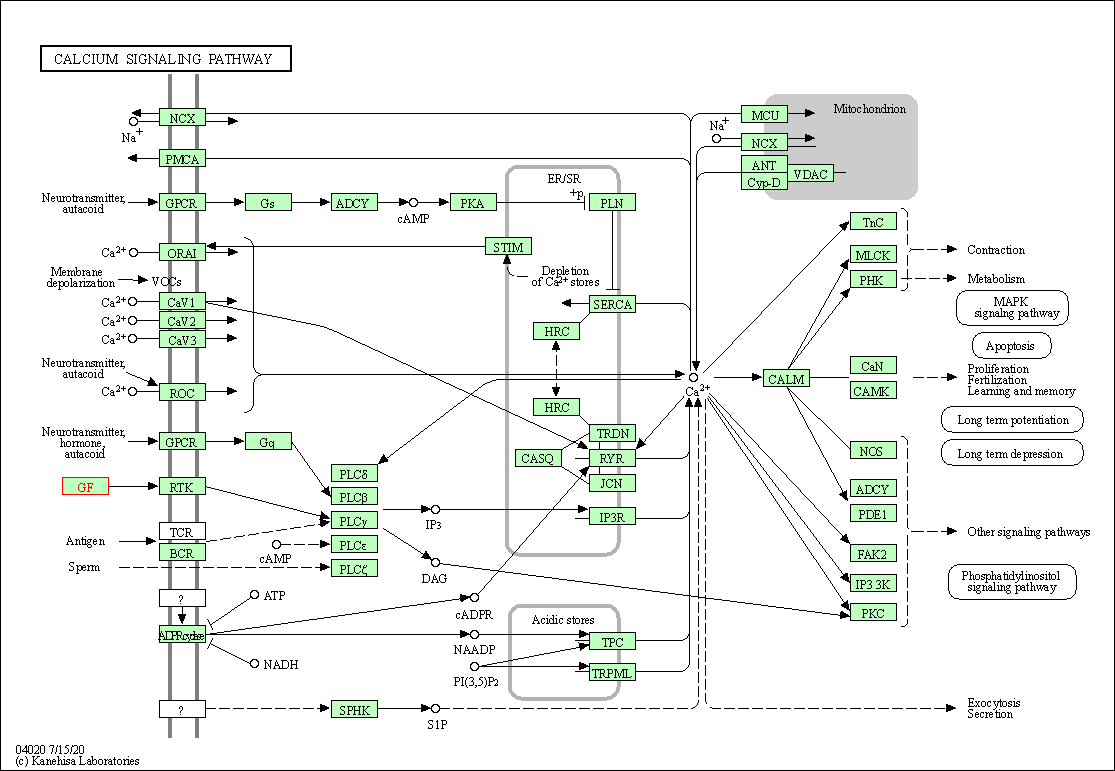
|
| Class: Environmental Information Processing => Signal transduction | Pathway Hierarchy | ||
| PI3K-Akt signaling pathway | hsa04151 | Affiliated Target |
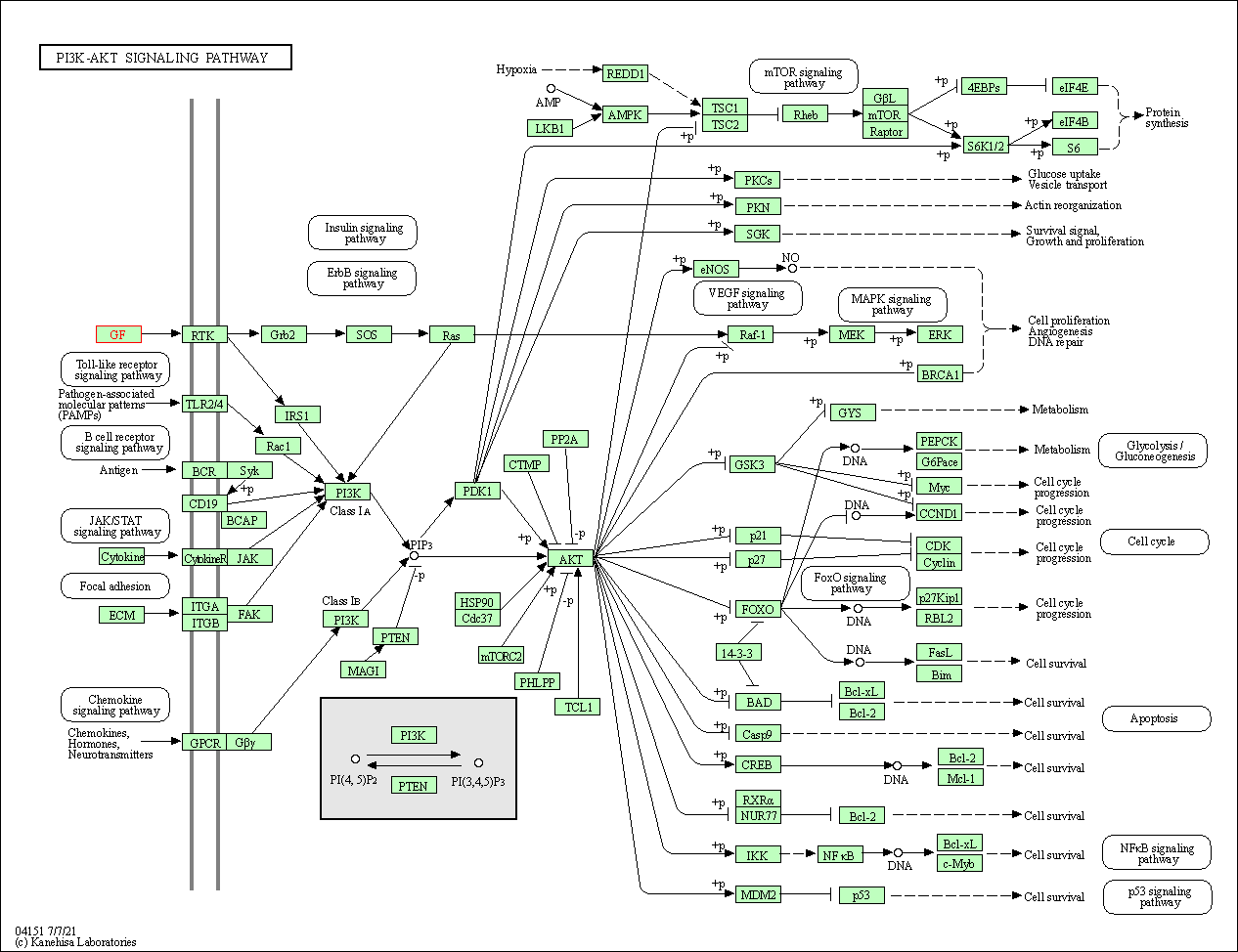
|
| Class: Environmental Information Processing => Signal transduction | Pathway Hierarchy | ||
| Focal adhesion | hsa04510 | Affiliated Target |
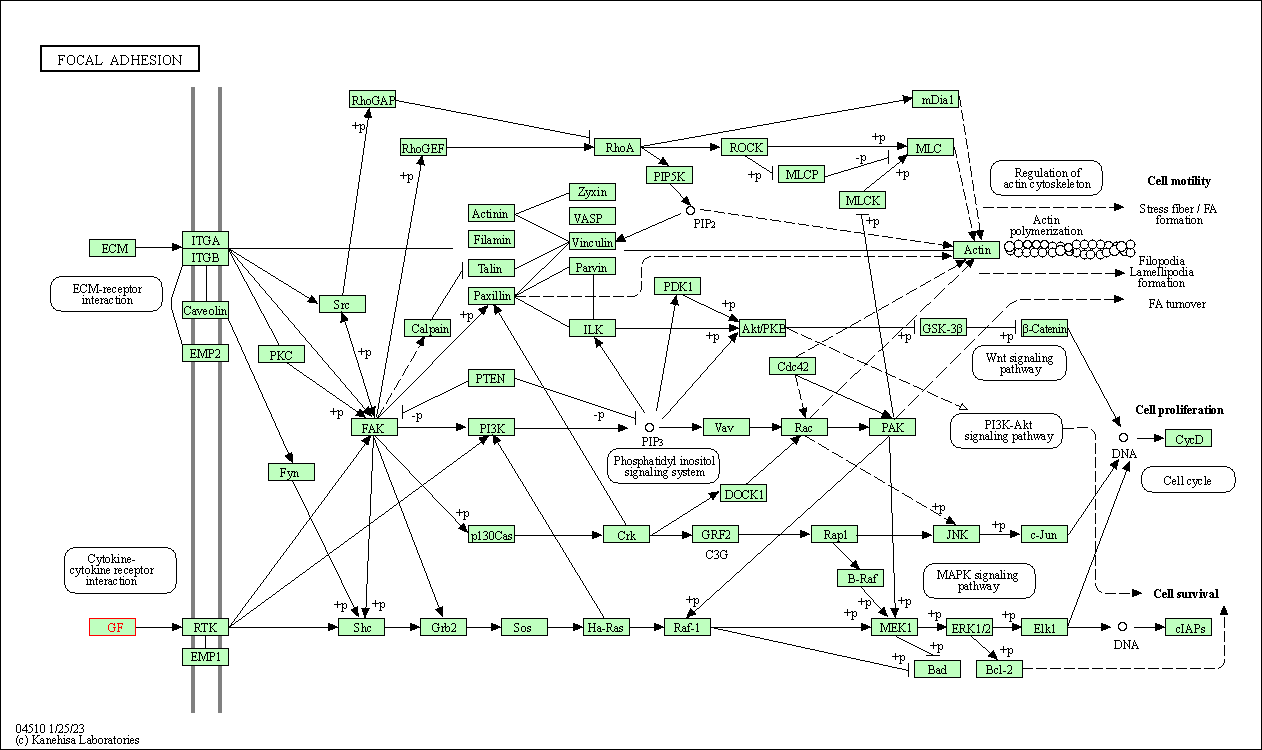
|
| Class: Cellular Processes => Cellular community - eukaryotes | Pathway Hierarchy | ||
| TNF signaling pathway | hsa04668 | Affiliated Target |
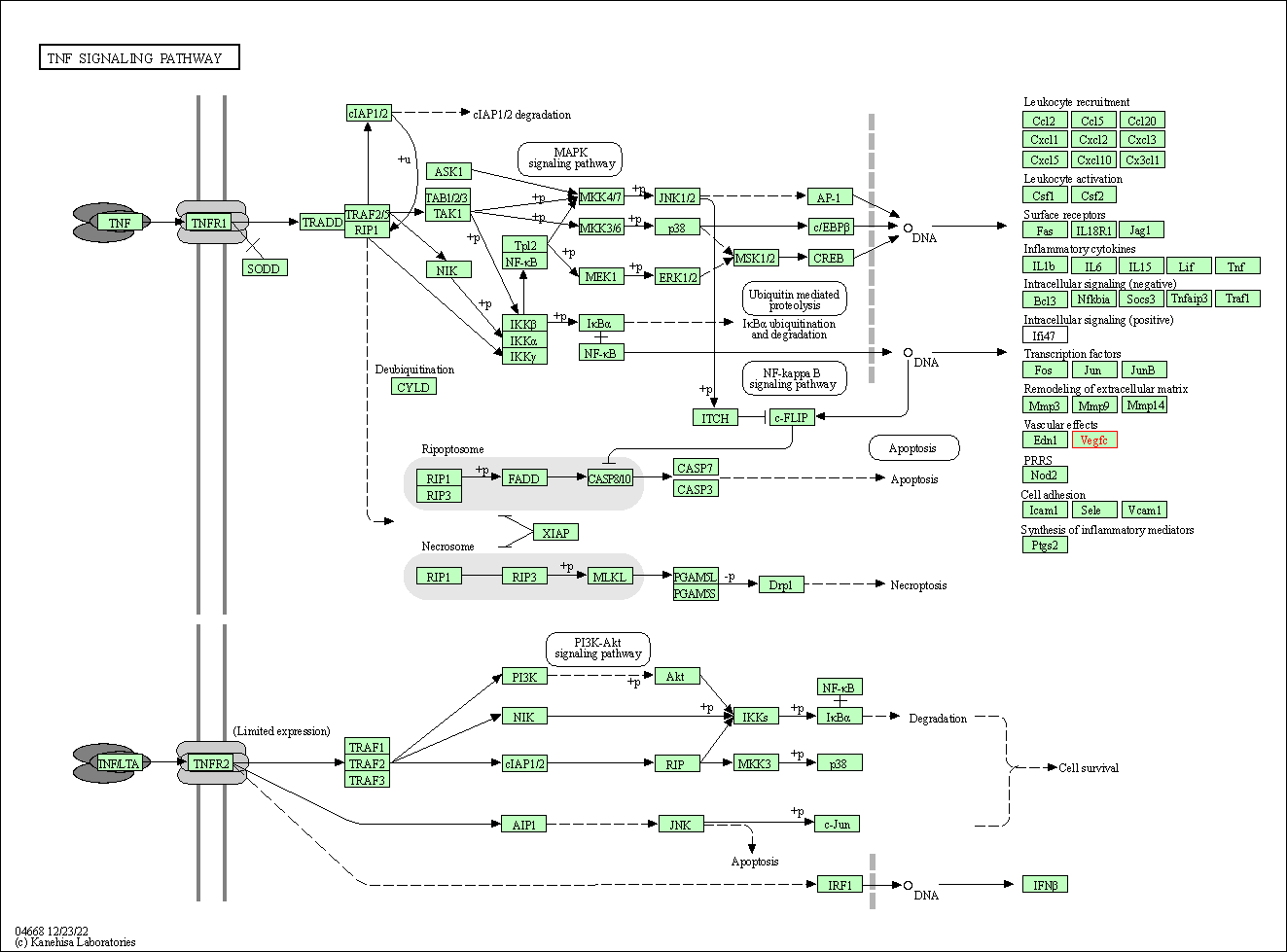
|
| Class: Environmental Information Processing => Signal transduction | Pathway Hierarchy | ||
| Relaxin signaling pathway | hsa04926 | Affiliated Target |
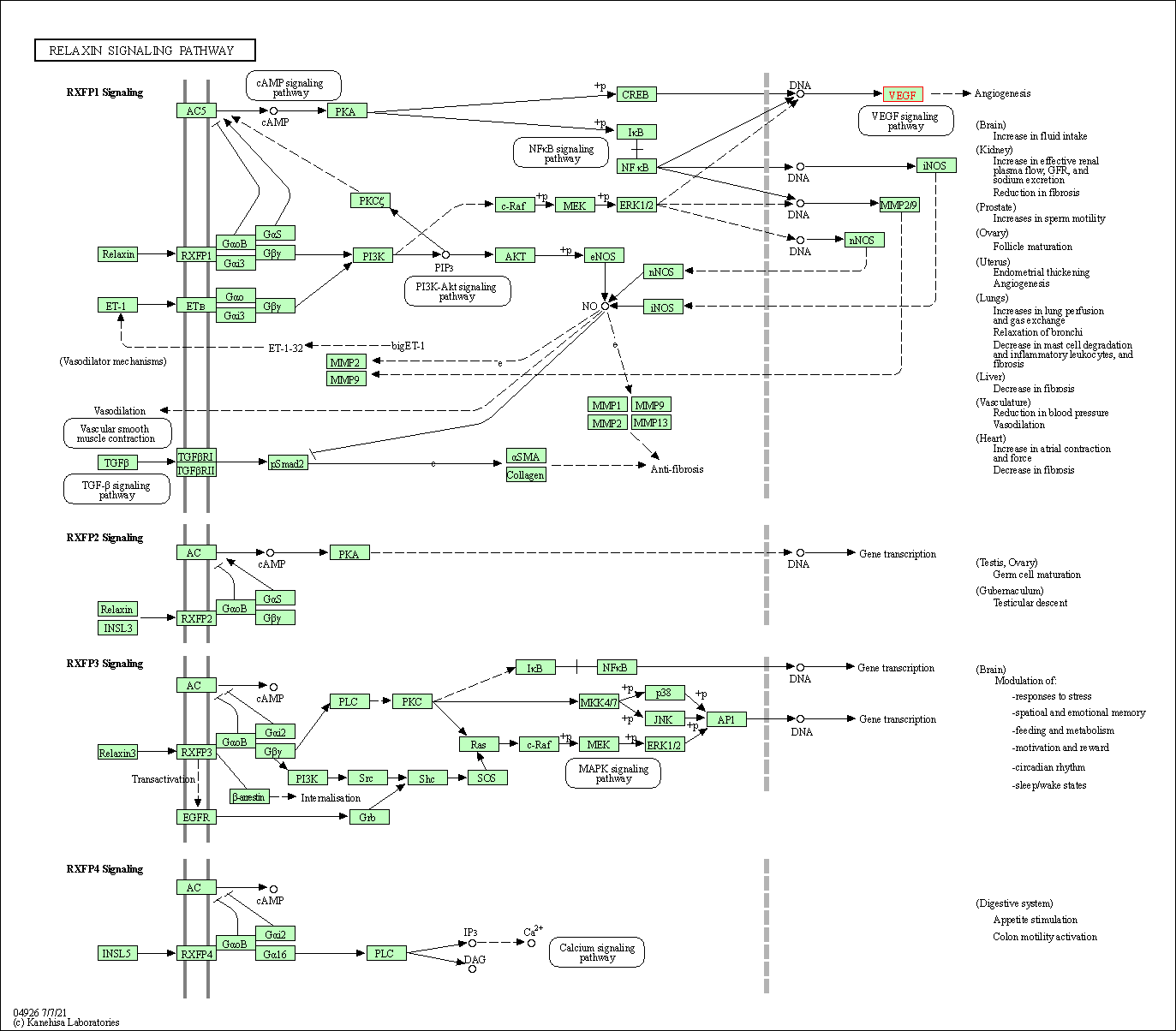
|
| Class: Organismal Systems => Endocrine system | Pathway Hierarchy | ||
| Click to Show/Hide the Information of Affiliated Human Pathways | |||
| Degree | 3 | Degree centrality | 3.22E-04 | Betweenness centrality | 0.00E+00 |
|---|---|---|---|---|---|
| Closeness centrality | 2.05E-01 | Radiality | 1.36E+01 | Clustering coefficient | 1.00E+00 |
| Neighborhood connectivity | 2.63E+01 | Topological coefficient | 5.27E-01 | Eccentricity | 12 |
| Download | Click to Download the Full PPI Network of This Target | ||||
| Target Affiliated Biological Pathways | Top | |||||
|---|---|---|---|---|---|---|
| KEGG Pathway | [+] 6 KEGG Pathways | + | ||||
| 1 | Ras signaling pathway | |||||
| 2 | Rap1 signaling pathway | |||||
| 3 | Cytokine-cytokine receptor interaction | |||||
| 4 | PI3K-Akt signaling pathway | |||||
| 5 | Focal adhesion | |||||
| 6 | Pathways in cancer | |||||
| PID Pathway | [+] 3 PID Pathways | + | ||||
| 1 | Alpha9 beta1 integrin signaling events | |||||
| 2 | VEGF and VEGFR signaling network | |||||
| 3 | VEGFR3 signaling in lymphatic endothelium | |||||
| Reactome | [+] 3 Reactome Pathways | + | ||||
| 1 | Platelet degranulation | |||||
| 2 | VEGF ligand-receptor interactions | |||||
| 3 | VEGF binds to VEGFR leading to receptor dimerization | |||||
| WikiPathways | [+] 2 WikiPathways | + | ||||
| 1 | Focal Adhesion | |||||
| 2 | Signaling by VEGF | |||||
| References | Top | |||||
|---|---|---|---|---|---|---|
| REF 1 | Trusted, scientifically sound profiles of drug programs, clinical trials, safety reports, and company deals, written by scientists. Springer. 2015. Adis Insight (drug id 800030807) | |||||
| REF 2 | ClinicalTrials.gov (NCT03345082) A Dose Ranging Study of OPT-302 With Ranibizumab in Neovascular (Wet) AMD. U.S. National Institutes of Health. | |||||
| REF 3 | Trusted, scientifically sound profiles of drug programs, clinical trials, safety reports, and company deals, written by scientists. Springer. 2015. Adis Insight (drug id 800030807) | |||||
| REF 4 | Trusted, scientifically sound profiles of drug programs, clinical trials, safety reports, and company deals, written by scientists. Springer. 2015. Adis Insight (drug id 800031989) | |||||
| REF 5 | Clinical pipeline report, company report or official report of Opthea. | |||||
| REF 6 | Structural determinants of vascular endothelial growth factor-D receptor binding and specificity. Blood. 2011 Feb 3;117(5):1507-15. | |||||
If You Find Any Error in Data or Bug in Web Service, Please Kindly Report It to Dr. Zhou and Dr. Zhang.

